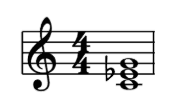Myths about teaching can hold you back
Learn why
Lesson 3 of 11
- Year 9
How did John Lennon use texture and tonality in his protest song 'Imagine'?
Lesson 3 of 11
- Year 9
How did John Lennon use texture and tonality in his protest song 'Imagine'?
These resources will be removed by end of Summer Term 2025.
Switch to our new teaching resources now - designed by teachers and leading subject experts, and tested in classrooms.
These resources were created for remote use during the pandemic and are not designed for classroom teaching.
Lesson details
Key learning points
- In this lesson, we will analyse how John Lennon employed texture, tonality and harmony in his protest song 'Imagine'. We will also understand how artists choose to cover songs.
Licence
This content is made available by Oak National Academy Limited and its partners and licensed under Oak’s terms & conditions (Collection 1), except where otherwise stated.
5 Questions
Q1.What tempo is "Imagine" by John Lennon?
What tempo is "Imagine" by John Lennon?
100 BPM
120 BPM
50 BPM
Q2.What is the most common time signature in 'popular' music?
What is the most common time signature in 'popular' music?
12/8
3/4
7/4
Q3.Which of the following statements is not true of "Imagine" by John Lennon?
Which of the following statements is not true of "Imagine" by John Lennon?
The piano has a simple accompanying rhythm.
There is syncopation in the pre-chorus and verse.
Q4.What is syncopation?
What is syncopation?
A rhythmic pattern where accented notes are placed on the strong beats.
Where there is a rest on beat 1.
Q5.Which statement is true of the rhythm in John Lennon's "Imagine"?
Which statement is true of the rhythm in John Lennon's "Imagine"?
Only the vocal part has semiquavers.
There are no dotted rhythms in the song "Imagine" by John Lennon.
5 Questions
Q1.What is the following chord?
What is the following chord?

C major
C minor 7
Q2.What is an extended chord?
What is an extended chord?
When you extend your fingers on the piano to play an extra note.
When you play two chords at the same.
Q3.What is the main texture in "Imagine" by John Lennon?
What is the main texture in "Imagine" by John Lennon?
Monophonic
Polyphonic
Q4.What is the tonality of "Imagine" by John Lennon?
What is the tonality of "Imagine" by John Lennon?
Atonal
Minor
Q5.How does the harmonic rhythm change from the verse to the pre-chorus?
How does the harmonic rhythm change from the verse to the pre-chorus?
The harmonic rhythm stays the same as they have the same number of chords per bar.
The pre-chorus has a fewer chords and so the harmonic rhythm is slower.

